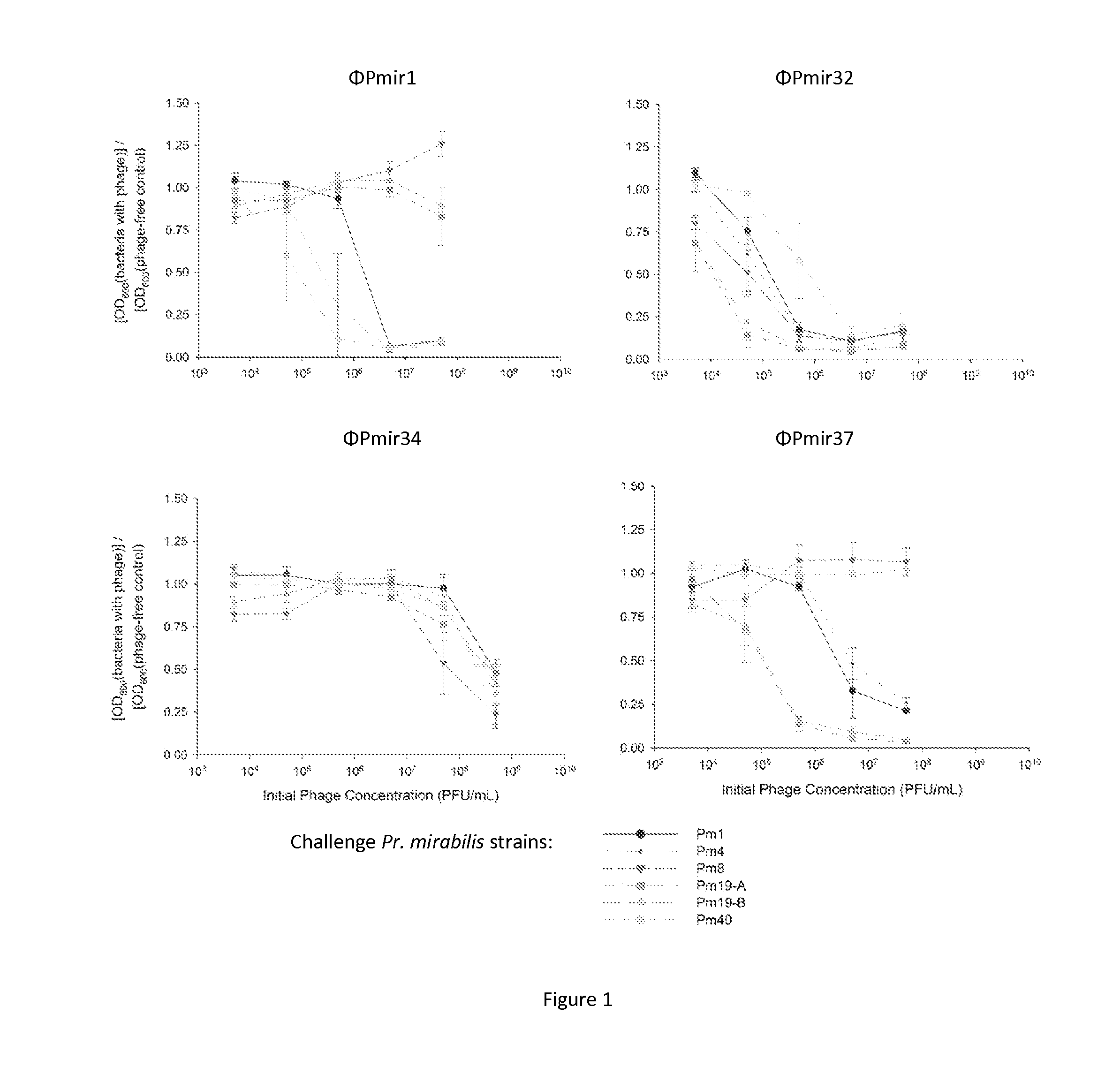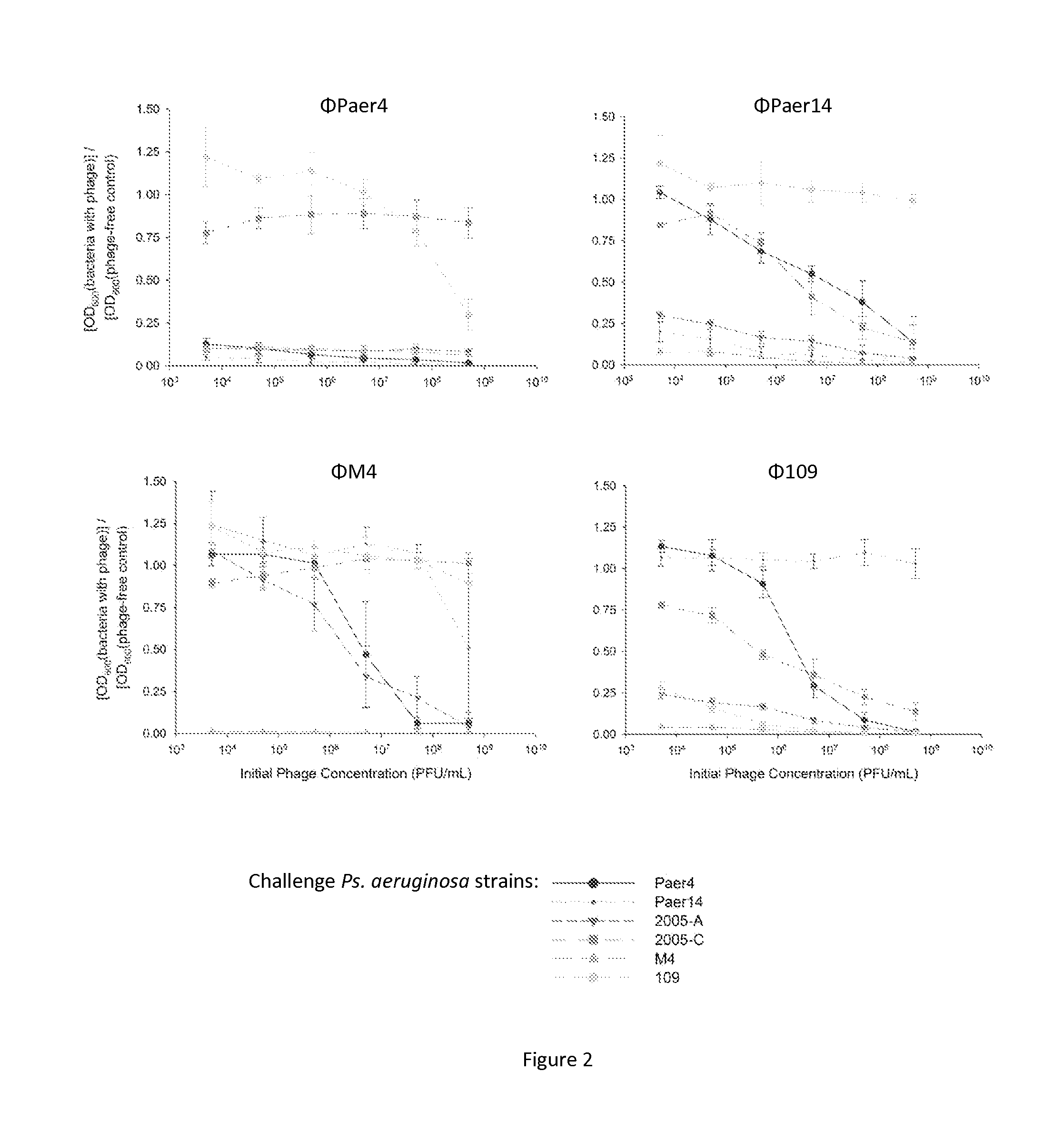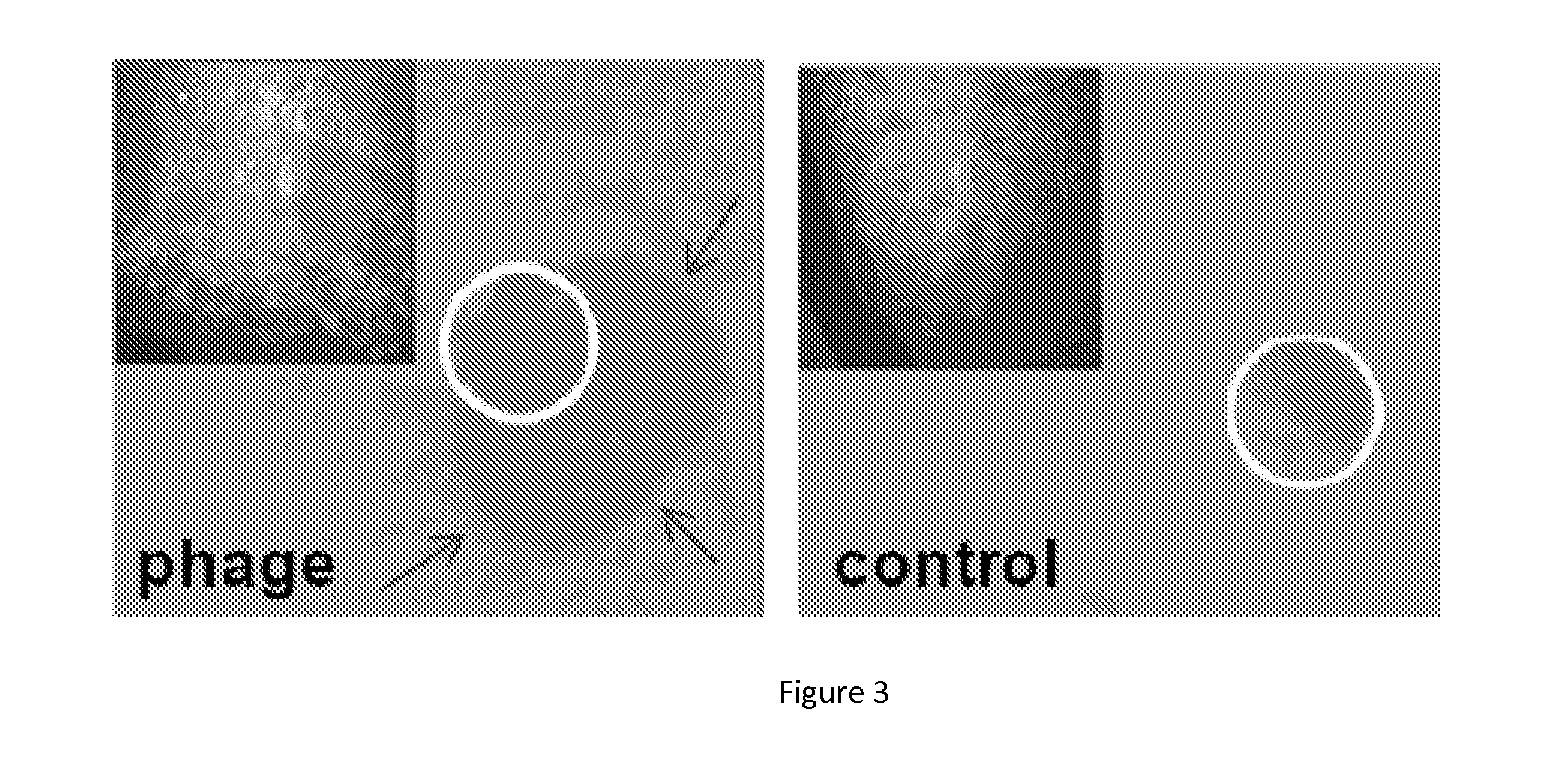Controlled covalent attachment of bioactive bacteriophage for regulating biofilm development
- Summary
- Abstract
- Description
- Claims
- Application Information
AI Technical Summary
Benefits of technology
Problems solved by technology
Method used
Image
Examples
example 1
Phage Production and Ability to Inhibit Planktonic Growth of Uropathogens
[0060]Phage are selected and propagated by standard techniques illustratively as described by [54], and in Carlson, K. 2005. Working with bacteriophages: common techniques and methodological approaches, p. 437-494 in E. Kutter and A. Sulakvelidze (ed.), Bacteriophages: Biology and Applications. CRC Press, New York. In one example, S. epidermidis 414 (HER 1292—Félix d'Hérelle Reference Center for Bacterial Viruses) are maintained at −80° C. Coagulase-negative staphylococcus phage 456 (Dean et al., J. Hyg. 71:261-270, 1973) (obtained from Health Protection Agency, Colindale, UK) is maintained as a lyophilized preparation stored at 4° C. The phage is propagated using the soft agar overlay technique (Adams, M., Bacteriophages, Interscience Publishers, London, 1959; Gratia, A., Compt. Rend. Soc. Biol. 122:812, 1936) and crude high titer phage broth cultures are prepared as described by Adams (Adams, M., Bacteriophag...
example 2
Tethering Phage to a Surface of a Catheter
[0062]Lubri-Sil™ all-silicone French Foley catheters are used (C. R. Bard, Covington, Ga.). Optionally, Lubri-Cath™ latex catheters or Lubri-Sil I.C.™ silicone catheters with silver (C. R. Bard, Covington, Ga.) are used. Lubri-Sil™ catheters are formed from hydrogel-coated silicone, Lubri-Cath™ catheters are formed from hydrogel-coated latex, and Lubri-Sil I.C.™ catheters are formed from hydrogel-coated silicone with silver alloy. Each catheter has a surface attached polyurethane matrix that is cross-linked with a poly(ethylene glycol) (PEG) hydrogel [50]. Hydrogel coatings on catheters are activated with 4-nitrophenyl chloroformate (NPC) (23 mM in THF or acetone) such as described in [48,53]. NPC activation of the hydrogel does not, in itself, affect bacterial adhesion. Residual NPC is removed by rinsing in THF or acetone. Residual THF or acetone is removed by rinsing in purified water. The activated surface is then incubated with bacteriop...
example 3
Tethered Phage are Highly Lytic
[0065]The phage tethered hydrogel coated catheters of Example 2 are cut into 1 cm2 segments. Control groups include (i) unmodified catheter, (ii) unactivated catheters (no NPC treatment) exposed to bacteriophage solution, and (iii) activated catheters coated with heat-inactivated phage. The presence of viable, tethered phages is determined by placing phage-treated and control catheter segments on a lawn of bacteria. As shown in FIG. 3A, specifically tethered Ps. aeruginosa or Pr. mirabilis phage retain infectivity and lytic activity as demonstrated by the presence of the telltale halo indicating bacterial lysis. Similarly treated catheter segments are placed into 3 ml AUM containing approximately 3×105 CFU / ml bacteria and incubated in shaking culture at 37° C. for 12 h. As shown in FIG. 4, significantly less biofilm develops on catheter segments presenting tethered phage than on unmodified Lubri-Sil™ (hydrogel-coated silicone), Lubri-Cath™ (hydrogel-co...
PUM
| Property | Measurement | Unit |
|---|---|---|
| Time | aaaaa | aaaaa |
| Electrical resistance | aaaaa | aaaaa |
| Antimicrobial properties | aaaaa | aaaaa |
Abstract
Description
Claims
Application Information
 Login to View More
Login to View More - R&D
- Intellectual Property
- Life Sciences
- Materials
- Tech Scout
- Unparalleled Data Quality
- Higher Quality Content
- 60% Fewer Hallucinations
Browse by: Latest US Patents, China's latest patents, Technical Efficacy Thesaurus, Application Domain, Technology Topic, Popular Technical Reports.
© 2025 PatSnap. All rights reserved.Legal|Privacy policy|Modern Slavery Act Transparency Statement|Sitemap|About US| Contact US: help@patsnap.com



